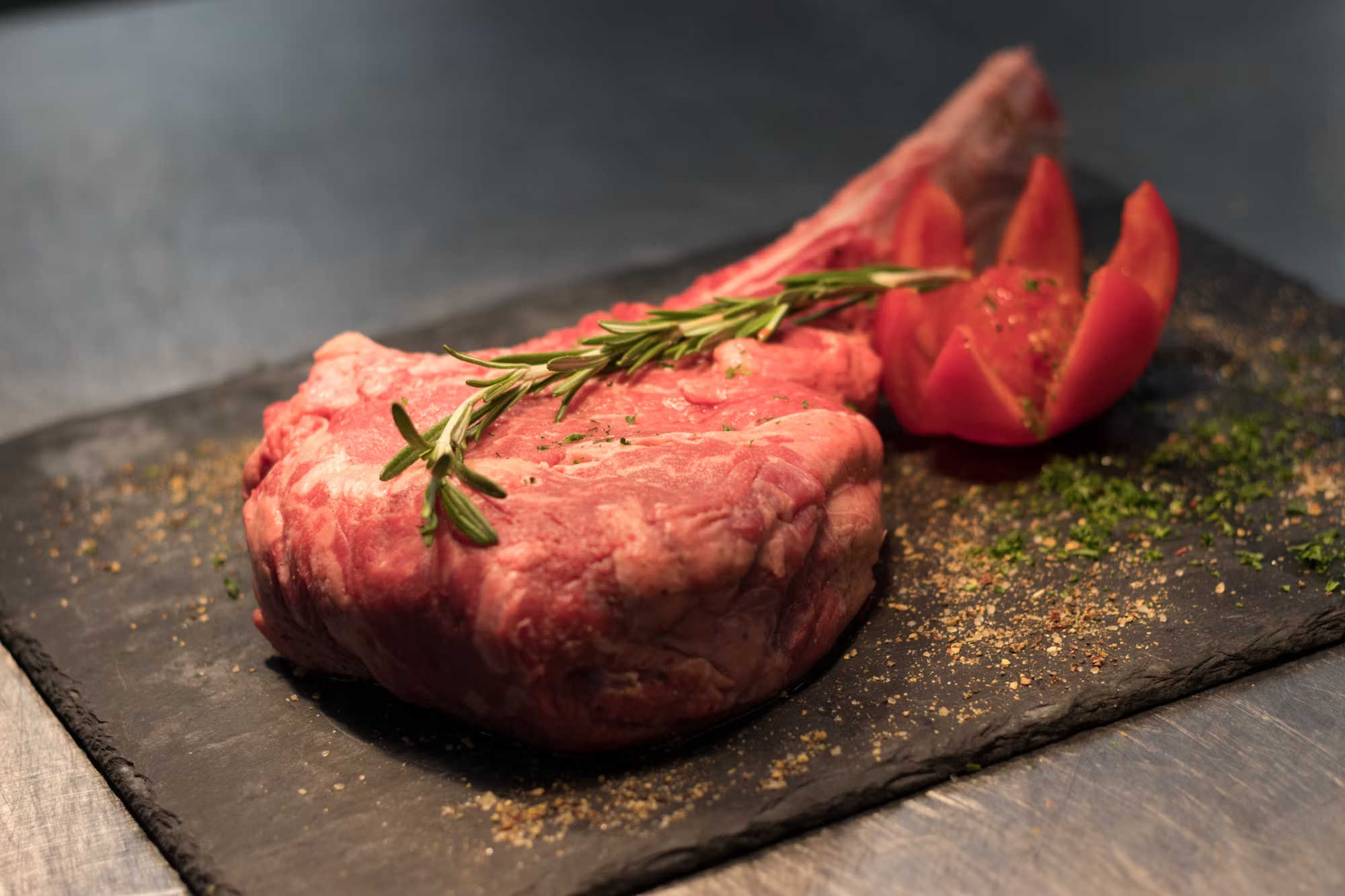Meat has long been a central element of diets across the globe, offering not only nourishment but also a means of celebration and connection. Different cultures have developed unique ways to prepare and enjoy meat, reflecting local traditions, resources, and culinary artistry. In this article, we embark on a journey to explore the diverse types of meat, their significance in various cuisines, and the delectable dishes that highlight their flavors. Beef stands out as one of the most popular meats worldwide, valued for its rich taste and versatility. In the United States, beef is synonymous with summer barbecues and backyard gatherings, where juicy hamburgers and perfectly grilled steaks become the stars of the meal. The classic American hamburger has transcended its fast-food origins, evolving into gourmet creations that showcase high-quality ingredients and innovative toppings. On the other hand, in Argentina, beef is celebrated through the tradition of asado, a social event centered around grilling various cuts of meat over open flames. This communal experience emphasizes the importance of family and friendship, as people come together to enjoy tender, flavorful beef accompanied by chimichurri and fresh salads. The dedication to grass-fed cattle and the pride in local beef production further highlight Argentina’s culinary identity. Across the Atlantic, beef holds a significant place in European cuisines. In France, dishes like beef bourguignon exemplify the art of slow cooking, where tender chunks of meat are braised in red wine with carrots and onions, resulting in a rich and comforting stew. This classic French dish not only showcases the depth of flavor achieved through patience but also reflects the country’s emphasis on quality ingredients. Italy also boasts its own beef specialties, such as osso buco, featuring braised veal shanks served with gremolata. Each region of Italy brings its unique flair to beef dishes, celebrating local traditions and ingredients. Transitioning to chicken, we find that this versatile protein is a favorite across many cultures due to its ability to absorb flavors and complement a wide variety of dishes. In Indian cuisine, chicken is often marinated in a symphony of spices, leading to iconic dishes like chicken tikka masala, which has become beloved far beyond its homeland. This dish embodies the spirit of Indian hospitality, as families gather around the table to share vibrant flavors. Thai cuisine also highlights chicken in aromatic dishes like green curry, where fresh herbs and coconut milk create a fragrant, flavorful experience that warms the soul. The adaptability of chicken ensures its presence on dining tables worldwide, reflecting the culinary creativity that thrives in diverse cultures. Lamb is another meat that holds cultural significance, particularly in Mediterranean and Middle Eastern cuisines. In Greece, roasting lamb is a cherished tradition during special occasions, such as Easter, where the meat is seasoned with herbs and served with sides like roasted potatoes and fresh salads. The slow cooking methods used in preparing lamb allow for the development of deep flavors, making it a centerpiece for communal meals. In Middle Eastern cultures, lamb is often featured in various preparations, from kebabs to slow-cooked stews, showcasing the rich culinary traditions that celebrate this meat. The use of spices enhances the natural richness of lamb, making it a highlight in festive dishes and gatherings. Pork is a favorite in many cultures, known for its adaptability and depth of flavor. In the Southern United States, barbecued pork ribs are a beloved dish at family gatherings and celebrations, embodying the warmth of Southern hospitality. Cooked slowly and smothered in tangy barbecue sauce, these ribs symbolize comfort and togetherness. In Mexico, carnitas—tender, slow-cooked pork—are integral to tacos and burritos, offering a delightful fusion of flavors. Asian cuisines also embrace pork, with dishes like char siu (Chinese barbecue pork) and Vietnamese banh mi sandwiches highlighting the diversity of flavors and preparations that make pork a staple choice. The versatility of pork allows it to shine in both casual and gourmet settings, making it a favorite among chefs and home cooks alike. Turkey, often associated with holiday feasts like Thanksgiving in the United States, has a rich culinary heritage that extends well beyond the festive season. In Germany, turkey schnitzel has gained popularity, showcasing the meat’s adaptability in various preparations. Meanwhile, in Italy, roasted turkey is typically seasoned with fresh herbs and served with seasonal vegetables, reflecting regional traditions. Ground turkey has also become a healthier alternative for many recipes, appearing in everything from meatballs to burgers. The versatility of turkey ensures its place in kitchens around the world, where it can be enjoyed in myriad forms. Duck offers a unique flavor profile that captivates many culinary enthusiasts. In French cuisine, duck confit—slow-cooked in its own fat—is a celebrated dish known for its tenderness and rich taste. Peking duck, a renowned dish in Chinese cuisine, is famous for its crispy skin and succulent meat, served with pancakes and hoisin sauce. These preparations exemplify the artistry involved in cooking duck, showcasing techniques that have been refined over generations. The rich flavors of duck make it a delightful choice for those seeking something a bit different on their dining tables. Exploring game meats such as venison and rabbit introduces adventurous eaters to unique flavors that evoke the wild. Venison is often prepared in rustic dishes like venison stew, where its robust flavor shines through. In regions where hunting is part of the culture, game meats are celebrated for their distinct tastes and the stories they tell. Rabbit, often featured in Mediterranean and French cuisines, is typically braised or roasted with fresh herbs, providing a delicate yet flavorful option for discerning palates. These meats encourage creativity in the kitchen, inviting chefs to experiment with flavors and techniques that honor their origins. While not traditionally classified as meat, seafood plays a vital role in many culinary traditions, especially in coastal regions. From fresh sushi in Japan to robust seafood paella in Spain, fish and shellfish offer light, refreshing flavors that beautifully complement heartier meats. Grilled fish, often simply seasoned with herbs and lemon, embodies the essence of Mediterranean cooking, showcasing the natural bounty of the sea. The incorporation of seafood into diverse culinary practices highlights its significance and adaptability, making it a cherished choice for many home cooks and professional chefs alike. Lastly, exotic meats such as ostrich and alligator present unique opportunities for culinary exploration. Ostrich steak, a lean red meat, can be prepared similarly to beef, offering a delightful twist for meat lovers. Alligator, often fried or grilled, provides a distinct flavor profile that piques the curiosity of adventurous diners. The growing interest in exotic meats reflects an evolving culinary landscape, where chefs and food enthusiasts seek to broaden their palates and experience new flavors. In conclusion, the exploration of meat across global cuisines reveals a rich diversity of flavors, techniques, and cultural significance. From the hearty beef dishes of North America to the delicate chicken preparations of Asia, and the vibrant lamb and pork dishes of the Mediterranean, each type of meat tells a unique story. These culinary traditions not only celebrate the ingredients but also the connections and shared experiences they foster among people. As we continue to explore and appreciate the wide range of culinary practices around the world, we enhance our understanding of food and its power to bring us together. This journey through the world of meat is a celebration of culture, creativity, and community, reminding us of the joy that sharing meals can bring.
Savoring the Diversity of Meat: A Culinary Journey Around the World









